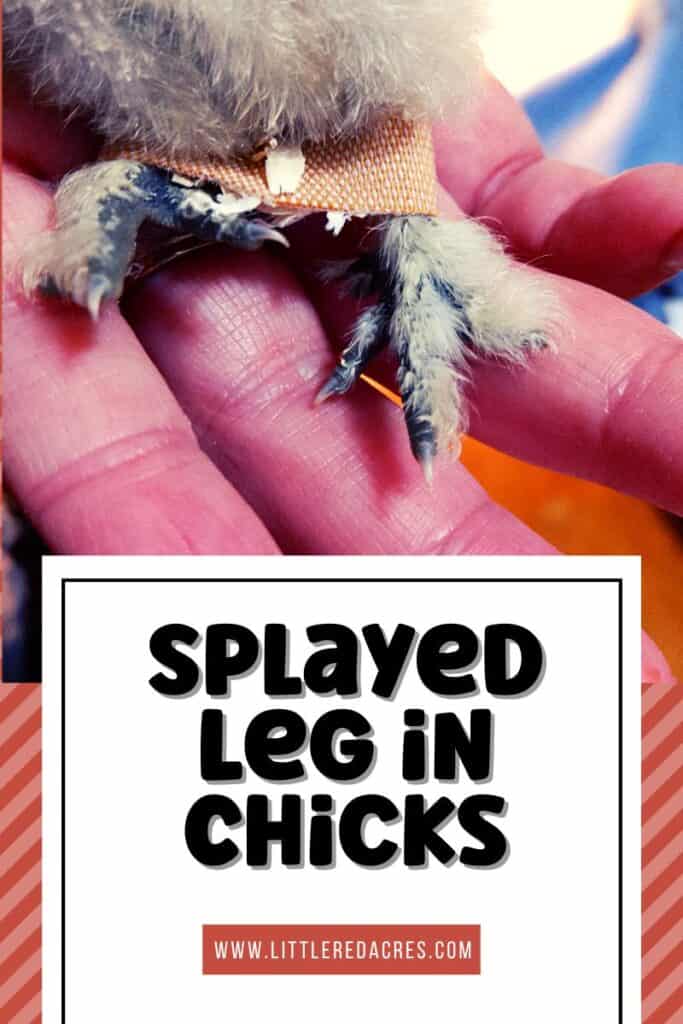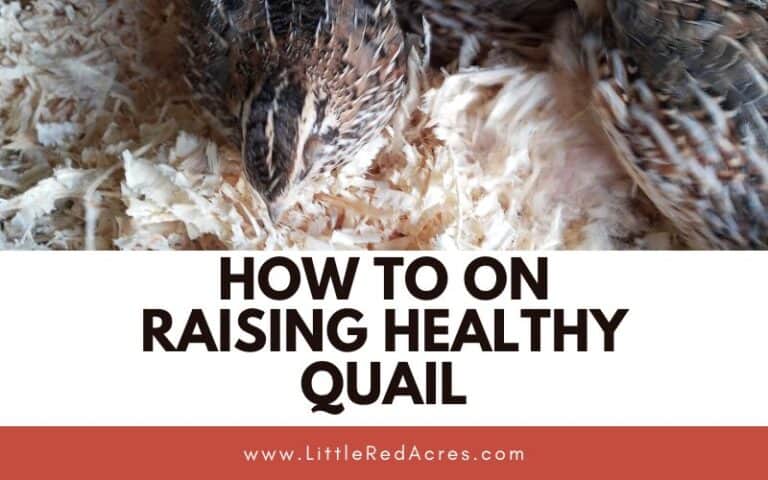Splayed Leg in Chicks
Inside: Learn how to treat splayed leg in chicks, a condition that affects their ability to walk or stand. Discover an effective treatment at home.
Splayed leg, also known as spraddle leg, is a common condition in newly hatched chicks that can cause them to be unable to stand or walk properly. It can happen to any chick. This can happen to them walking on a slippery surface such as plastic, non-textured flooring, or glass.

This post may contain affiliate links, see my disclosure policy for more information.
Splayed Leg in Chicks
This condition can be caused by a variety of factors, including genetics, incubation issues, or environmental factors, such as walking on a slippery surface such as plastic, flooring, or glass. Fortunately, there are several ways to treat splayed legs in chicks and help them regain their mobility.
Get updates & freebies delivered to your inbox!
Identify the Problem
Splayed leg is easy to identify, as the chick's legs will be splayed out to the side, preventing it from standing or walking properly. It's important to address the issue as soon as possible to prevent further damage to the chick's legs and improve its chances of recovery.
Splint the Legs
To correct the splayed leg, you will need to splint the chick's legs. It really is easy to do!
Use a Band-Aid to create a small brace that will help to hold the chick's legs together. Gently position the chick's legs into a normal standing position. Wrap one end of the Band-Aid around one leg, and the other end around the other leg with them spread apart just enough that they are in a “normal” stand position.
Monitor and Adjust the Splint
It's important to monitor the chick's progress regularly and adjust the splint as necessary. The chick will need to be able to move its legs freely and should not be in pain.
The bandages seem to come loose easily, so you might have to redo them. A splayed leg can be healed quickly, in 24-48 hours.
Provide A Supportive Environment for A Splayed Leg Chick
While the chick is recovering, it's important to provide a supportive environment to help it heal. Make sure the chick has access to clean water and food, as well as a warm and safe place to rest.
Make sure to only have the chick in with other chicks of the same age so that no one picks on it while it hobbles around.
Consider the Alternative
If the chick's condition does not improve or worsens, it may be necessary to think about other options. You could choose to seek veterinary help or you may decide that it is better to cull the chick.

Preventing Splayed Leg
It is easy to prevent splayed leg from happening so I don't want you to worry about it happening to your chicks every time you have chicks.
The first thing to do is make sure that they are on a surface that is not slippery or smooth. They need to be able to walk around without slipping, which is when they get splayed legs. How do you do this?
- gripping drawer liner in incubators
- pine shavings in brooders
- do not have them walking on your floor no matter how cute it is
A splayed leg is a common condition in newly hatched chicks that can be corrected with proper care and treatment.
Splinting the legs, monitoring and adjusting the splint, providing a supportive environment, and seeking veterinary help if necessary can all help to improve the chick's chances of recovery. With patience and care, your new chick can recover from a splayed leg and thrive in its new home.
Frequently Asked Questions
Can a chicken live with splayed legs? Chicks grow rapidly and if the splayed legs are not treated, their bones and muscles will not develop normally. A chick with deformed legs and feet is likely to suffer pain and will rarely survive to adulthood.

Want More?
How to on Hatching Chicken Eggs
Pasty Butt in Chicks: What You Need to Know
What Causes Baby Chicks to Die






